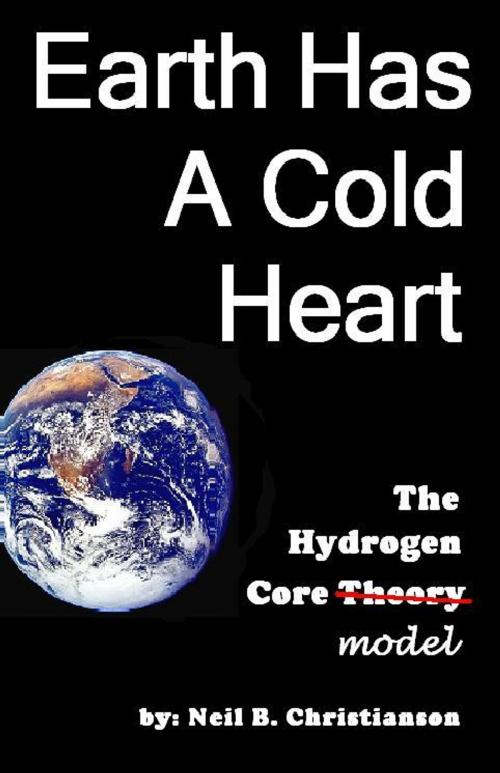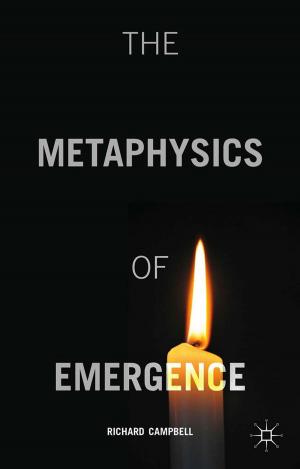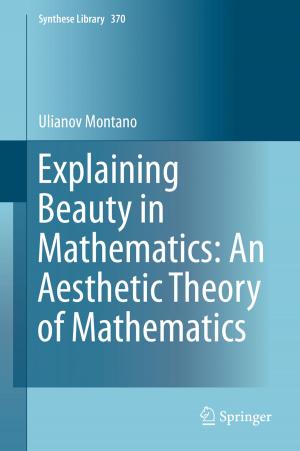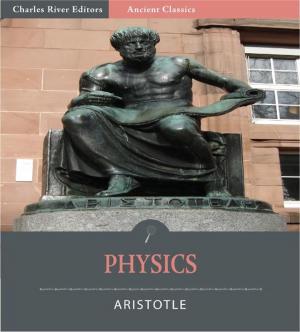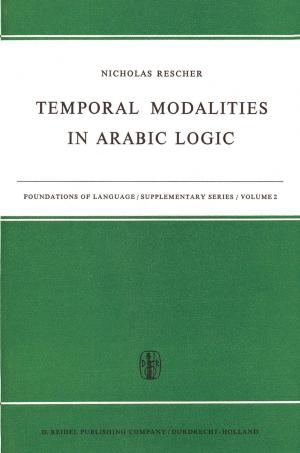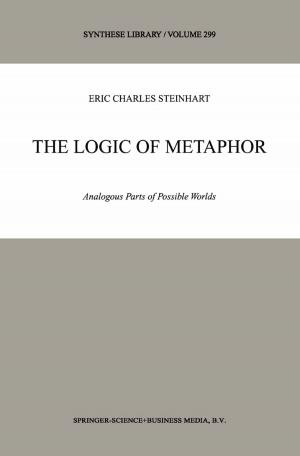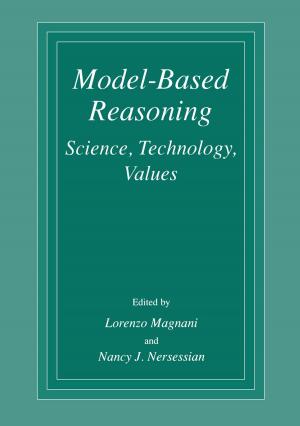| Author: | Neil Christianson | ISBN: | 9781452403175 |
| Publisher: | Neil Christianson | Publication: | March 10, 2010 |
| Imprint: | Smashwords Edition | Language: | English |
| Author: | Neil Christianson |
| ISBN: | 9781452403175 |
| Publisher: | Neil Christianson |
| Publication: | March 10, 2010 |
| Imprint: | Smashwords Edition |
| Language: | English |
ELIJAH’S MESSAGE
The Book of Mormon teaches the New World’s native population descended from an immigrant Jewish tribe. So the Mayan, who see the Zodiac changing on 21 December 2012 (Newton says 2060), must be a remnant of that tribe. A tribe that brought with it knowledge of the ancient condensed model—the one used by biblical prophets to forecast future events. So, out of curiosity, let’s update the old condensed model to today’s knowledge of the physical characteristics of the primary constituents in molecular clouds and see where it leads.
We know planetary bodies condense in molecular clouds containing hydrogen, helium and ice-coated dust. But for hydrogen to condense, it must radiate heat to the background temperature of space (3 Kelvin). Under normal conditions, hydrogen condenses to a liquid at 20 Kelvin; but if cooled to 9 Kelvin (molecular cloud temperature) it goes directly to a solid, whose molecules are free to rotate, thus, giving it a fluid quality. Solidification gives up heat that radiates to the surface of the molecular cloud and on to the vast heat sink of space. Once lost that heat cannot be regained, so hydrogen stays in a quasi-solid form. A solidifying frenzy builds a gigantic ball of ice-coated dust particles incased in quasi-solid hydrogen, which is permeated with entrapped helium. Solid hydrogen is a refrigerant, so through a series of warming periods and Ice Ages a condensed planet pumps its hydrogen core down to a temperature just above absolute zero—to its metallic state.
Of further interest, at 2.17 Kelvin entrapped helium becomes a superfluid that conducts heat perfectly—heat in is equal to heat out. Also, its constant superfluid movement orchestrates the growth of a pure hydrogen crystal deep in the condensing body. That pure hydrogen crystal constitutes a natural nuclear reactor. So to continue, we must look to the physics of nuclear reactions. Under ever increasing pressure an atom in an innermost hydrogen-hydrogen molecule captures its electron to become a neutron. The original molecule then becomes a deuterium atom. Two deuterium atoms join to form a molecule, whose fusion expels a good amount of heat, which is whisked away by superfluid helium to the planet’s surface; but, the major heat producer (5 times greater than deuterium-deuterium fusion) is the fusion of a deuterium-tritium molecule—a fusion that powers stars. Unfortunately, when this type of fusion takes place in a small planetary body, its cold fusion furnace goes thermonuclear blowing that planet apart—leaving naught behind but a telltale dust ring. Gamma-ray bursts from such explosions occur daily from wholly random directions in the sky.
Now, an explosion of a planet in our galaxy is of no real consequence to life on Earth; but, if in our solar system its gamma-rays will kill bacteria needed for life—triggering mass extinctions. In their observation of Quetzalcoatl, their feathered serpent (known to us as Venus, who has a surface temperature greater than that of a self-cleaning oven—undoubtedly caused by fusion), Mayan astronomers foresaw a change to the world’s zodiac. His explosion is prophesied to be seen from Israel; so, let’s review what Immanuel said about the last days by reading Mathew, chapter 24, 15-30 and Mark, chapter 13, 14-26; then, consider what will happen when Venus blows. Gamma rays will hit half the Earth’s surface in an irregular pattern, because some rays will be blocked by debris. We will have to hurry to mountain caves to escape incoming debris. The debris cloud will block the Sun’s light and, in turn, the moon will be dark. When chunks of debris near Earth their reflected light will look like the stars of heaven are falling.
Now, by simply considering the existence of the 360 degree acceleration of horizontal gravity in the geodesists’ flattening equation, the above condensed model becomes a viable alternative to the current hot-core model.
ELIJAH’S MESSAGE
The Book of Mormon teaches the New World’s native population descended from an immigrant Jewish tribe. So the Mayan, who see the Zodiac changing on 21 December 2012 (Newton says 2060), must be a remnant of that tribe. A tribe that brought with it knowledge of the ancient condensed model—the one used by biblical prophets to forecast future events. So, out of curiosity, let’s update the old condensed model to today’s knowledge of the physical characteristics of the primary constituents in molecular clouds and see where it leads.
We know planetary bodies condense in molecular clouds containing hydrogen, helium and ice-coated dust. But for hydrogen to condense, it must radiate heat to the background temperature of space (3 Kelvin). Under normal conditions, hydrogen condenses to a liquid at 20 Kelvin; but if cooled to 9 Kelvin (molecular cloud temperature) it goes directly to a solid, whose molecules are free to rotate, thus, giving it a fluid quality. Solidification gives up heat that radiates to the surface of the molecular cloud and on to the vast heat sink of space. Once lost that heat cannot be regained, so hydrogen stays in a quasi-solid form. A solidifying frenzy builds a gigantic ball of ice-coated dust particles incased in quasi-solid hydrogen, which is permeated with entrapped helium. Solid hydrogen is a refrigerant, so through a series of warming periods and Ice Ages a condensed planet pumps its hydrogen core down to a temperature just above absolute zero—to its metallic state.
Of further interest, at 2.17 Kelvin entrapped helium becomes a superfluid that conducts heat perfectly—heat in is equal to heat out. Also, its constant superfluid movement orchestrates the growth of a pure hydrogen crystal deep in the condensing body. That pure hydrogen crystal constitutes a natural nuclear reactor. So to continue, we must look to the physics of nuclear reactions. Under ever increasing pressure an atom in an innermost hydrogen-hydrogen molecule captures its electron to become a neutron. The original molecule then becomes a deuterium atom. Two deuterium atoms join to form a molecule, whose fusion expels a good amount of heat, which is whisked away by superfluid helium to the planet’s surface; but, the major heat producer (5 times greater than deuterium-deuterium fusion) is the fusion of a deuterium-tritium molecule—a fusion that powers stars. Unfortunately, when this type of fusion takes place in a small planetary body, its cold fusion furnace goes thermonuclear blowing that planet apart—leaving naught behind but a telltale dust ring. Gamma-ray bursts from such explosions occur daily from wholly random directions in the sky.
Now, an explosion of a planet in our galaxy is of no real consequence to life on Earth; but, if in our solar system its gamma-rays will kill bacteria needed for life—triggering mass extinctions. In their observation of Quetzalcoatl, their feathered serpent (known to us as Venus, who has a surface temperature greater than that of a self-cleaning oven—undoubtedly caused by fusion), Mayan astronomers foresaw a change to the world’s zodiac. His explosion is prophesied to be seen from Israel; so, let’s review what Immanuel said about the last days by reading Mathew, chapter 24, 15-30 and Mark, chapter 13, 14-26; then, consider what will happen when Venus blows. Gamma rays will hit half the Earth’s surface in an irregular pattern, because some rays will be blocked by debris. We will have to hurry to mountain caves to escape incoming debris. The debris cloud will block the Sun’s light and, in turn, the moon will be dark. When chunks of debris near Earth their reflected light will look like the stars of heaven are falling.
Now, by simply considering the existence of the 360 degree acceleration of horizontal gravity in the geodesists’ flattening equation, the above condensed model becomes a viable alternative to the current hot-core model.
